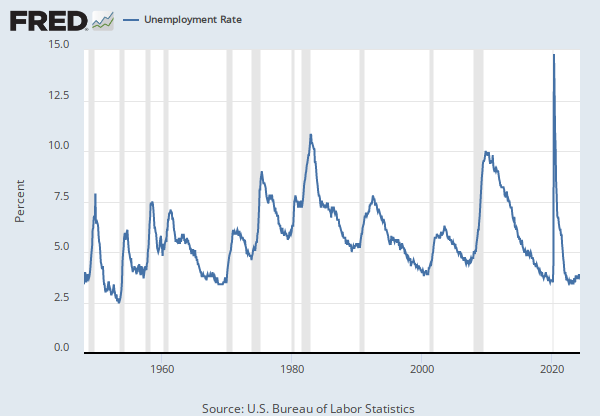Federal Reserve Economic Data
Data in this graph are copyrighted. Please review the copyright information in the series notes before sharing.
Notes
Source: World Bank
Release: World Development Indicators
Units: Births per Woman, Not Seasonally Adjusted
Frequency: Annual
Notes:
Total fertility rate represents the number of children that would be born to a woman if she were to live to the end of her childbearing years and bear children in accordance with current age-specific fertility rates.
World Bank Source: (1) United Nations Population Division. World Population Prospects, (2) United Nations Statistical Division. Population and Vital Statistics Report (various years), (3) Census reports and other statistical publications from national statistical offices, (4) Eurostat: Demographic Statistics, (5) Secretariat of the Pacific Community: Statistics and Demography Program, and (6) U.S. Census Bureau: International Database
Source Indicator: SP.DYN.TFRT.IN
Suggested Citation:
World Bank, Fertility Rate, Total for New Zealand [SPDYNTFRTINNZL], retrieved from FRED, Federal Reserve Bank of St. Louis; https://fred.stlouisfed.org/series/SPDYNTFRTINNZL, .
Source: World Bank
Release: World Development Indicators
Units: Births per Woman, Not Seasonally Adjusted
Frequency: Annual
Notes:
Total fertility rate represents the number of children that would be born to a woman if she were to live to the end of her childbearing years and bear children in accordance with current age-specific fertility rates.
World Bank Source: (1) United Nations Population Division. World Population Prospects, (2) United Nations Statistical Division. Population and Vital Statistics Report (various years), (3) Census reports and other statistical publications from national statistical offices, (4) Eurostat: Demographic Statistics, (5) Secretariat of the Pacific Community: Statistics and Demography Program, and (6) U.S. Census Bureau: International Database
Source Indicator: SP.DYN.TFRT.IN
Suggested Citation:
World Bank, Fertility Rate, Total for Indonesia [SPDYNTFRTINIDN], retrieved from FRED, Federal Reserve Bank of St. Louis; https://fred.stlouisfed.org/series/SPDYNTFRTINIDN, .
Source: World Bank
Release: World Development Indicators
Units: Births per Woman, Not Seasonally Adjusted
Frequency: Annual
Notes:
Total fertility rate represents the number of children that would be born to a woman if she were to live to the end of her childbearing years and bear children in accordance with current age-specific fertility rates.
World Bank Source: (1) United Nations Population Division. World Population Prospects, (2) United Nations Statistical Division. Population and Vital Statistics Report (various years), (3) Census reports and other statistical publications from national statistical offices, (4) Eurostat: Demographic Statistics, (5) Secretariat of the Pacific Community: Statistics and Demography Program, and (6) U.S. Census Bureau: International Database
Source Indicator: SP.DYN.TFRT.IN
Suggested Citation:
World Bank, Fertility Rate, Total for Namibia [SPDYNTFRTINNAM], retrieved from FRED, Federal Reserve Bank of St. Louis; https://fred.stlouisfed.org/series/SPDYNTFRTINNAM, .
Release Tables
Related Data and Content
Data Suggestions Based On Your Search
Content Suggestions
Related Categories
Releases
Tags
Permalink/Embed
modal open, choose link customization options
Select automatic updates to the data or a static time frame. All data are subject to revision.






























